Where to Experience the Finest Moroccan Tajine in Marrakech and Essaouira
By Lorenzo VillaThe first time I had a tajine was when Nadja, a Moroccan friend, showed up at my house with a round pot and a long cone-shaped lid, both made of clay. Traditionally, Nadja explained to me, a tajine is a rich mixture of meat, poultry or fish and most often includes only vegetables, along with spices, olive oil and water. It takes about two hours of cooking over very low heat and is never mixed: the structure of the lid alone amalgamates the ingredients, creating a self-cooking cycle that enhances the flavours of one of the best stews I’ve ever had.
The home experience with Nadja made me want to try the other tajines, learning the different spices that accompany the marinating of the beef or those made with fish or chicken. So, I took the chance of a holiday in Marrakech to seek out the unique and intense flavour of the Moroccan tajine.
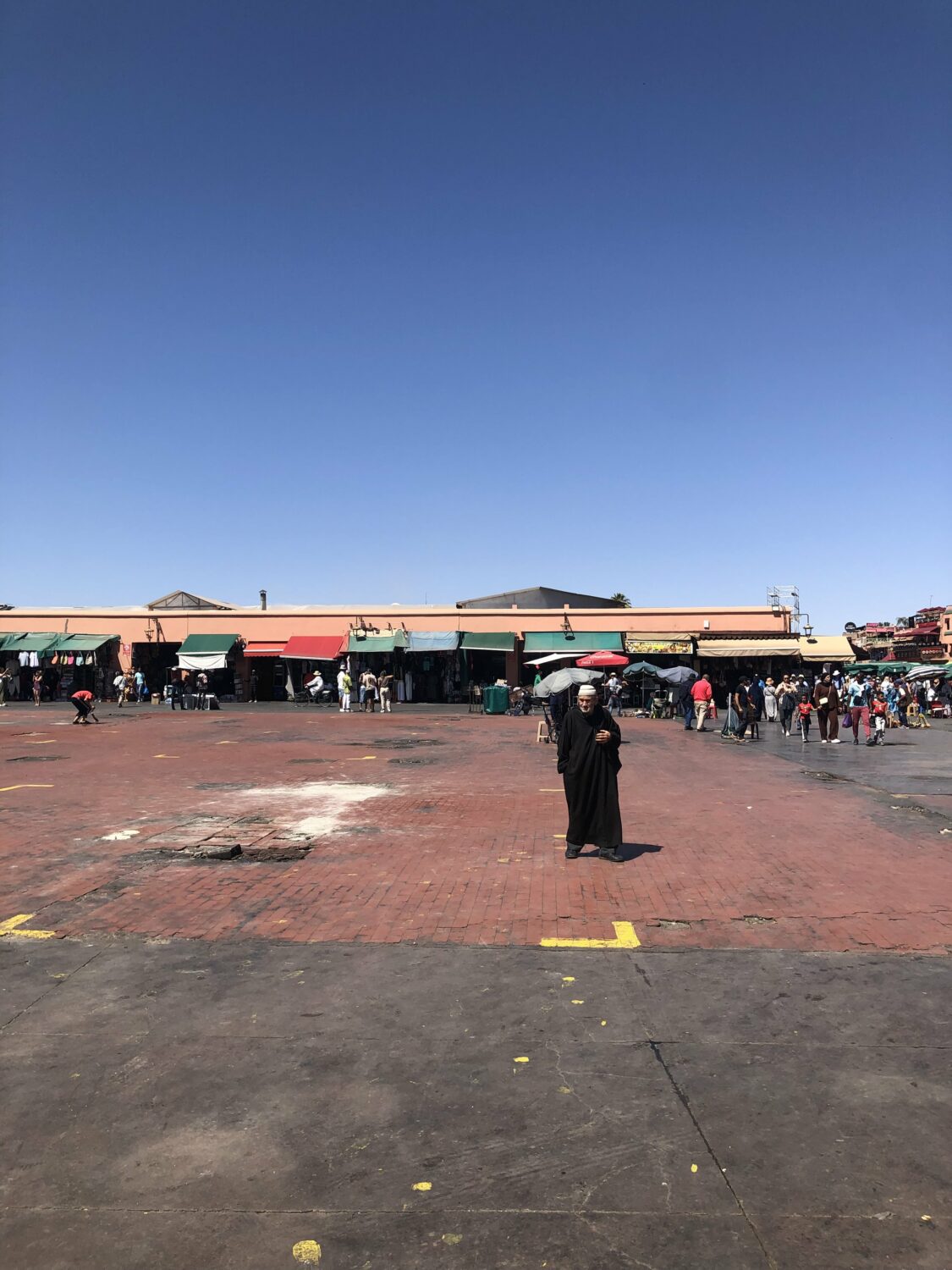
In Morocco – but actually in the whole North Africa, as it is a dish of Berber origin – there are different types of tajine and you can find them everywhere. Each restaurant tends to offer the top three with chicken, beef and lamb, and in every corner of the suqs, you can buy pots of different sizes. But you get a sense of the meaning of the dish when you see groups of people on the street sharing their tajine, served hot and still sizzling in the middle of the table and eaten strictly with their hands, in communal style, in respect of the guest.
Here are three recommendations (one for each of tajine’s traditional main ingredients) for tajine restaurants in Marrakech, plus a couple of additional experiences you absolutely must try.
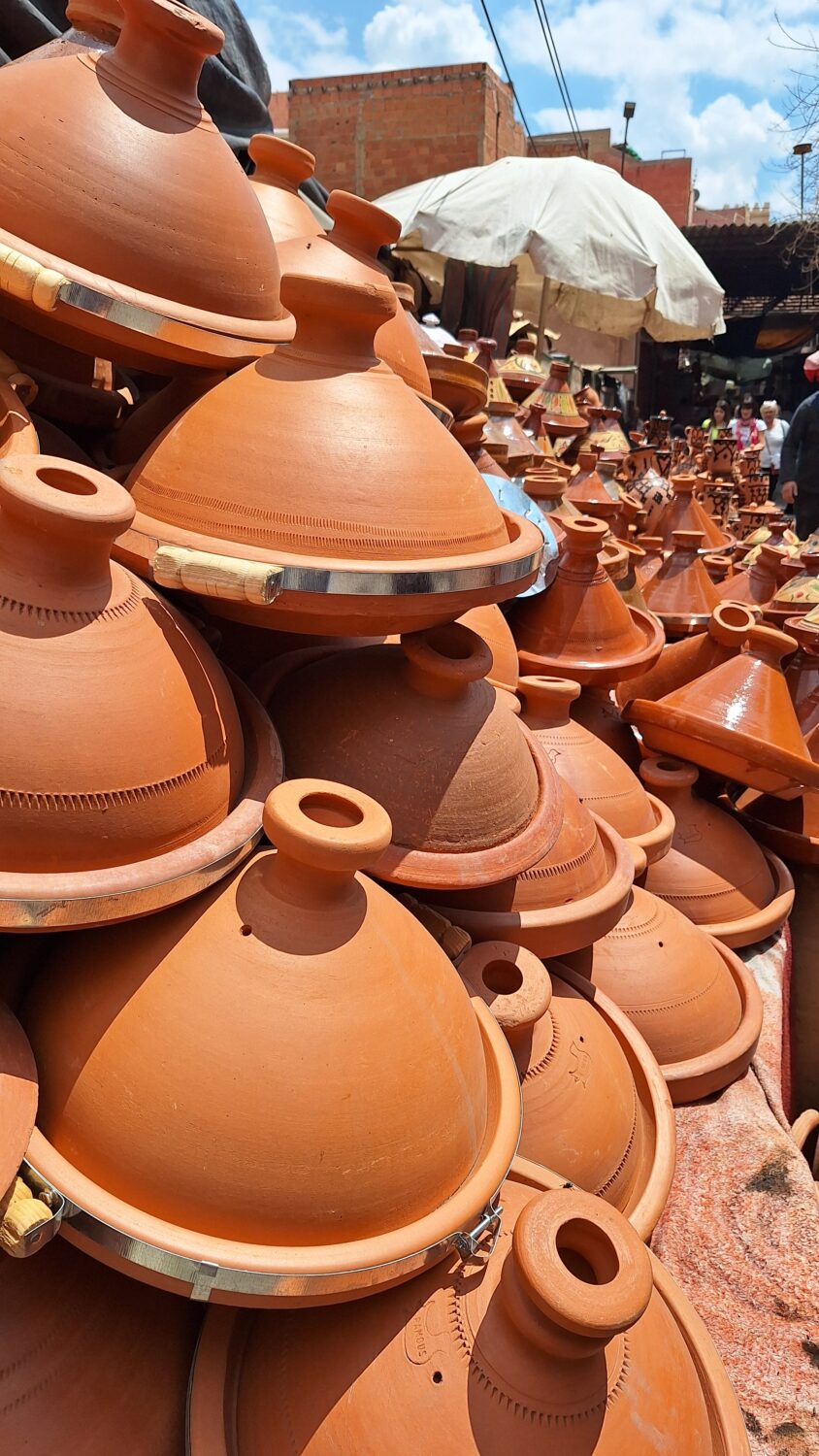
DAR CHERIFA – Tajine de boeuf
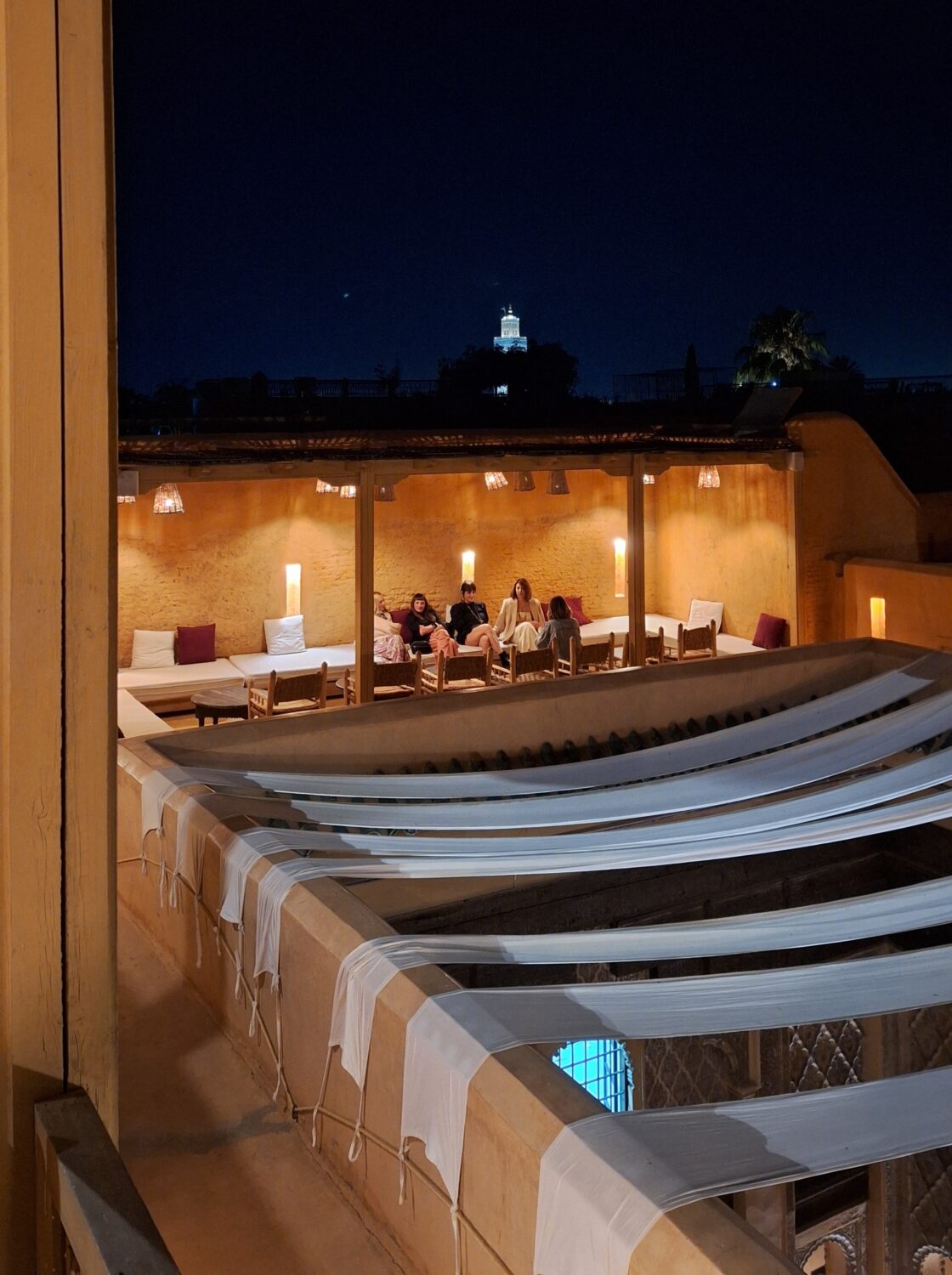
From Marrakech’s central Jemaa el Fna square passing by the the Suq Sammarine, you have to get lost a couple of times before taking the right cul-de-sac to Dar Cherifa. The riad that hosts the restaurant is one of the oldest in Marrakech (dating back to the Saadian dynasty, late 16th century) with a deep central patio with carved cedar wood panels and stuccoes with Koranic inscriptions. Here you’ll find traditional Moroccan classics, from couscous with seasonal vegetables to chicken bestila – a phyllo dough pie stuffed with meat and almonds used as a festive appetiser. The menu also offers a selection of Maghreb classics with different types of tajines. I had the tajine de boeuf with dried apricots, sesame and walnuts. The sauce – make sure to get enough khobz, the round bread that you’ll see everywhere, for scarpetta – is sweet and sour with a strong fruity taste that is balanced by the meat – hard to find such tenderness elsewhere. The portions are very generous, and it is only right to share the tajine. But if you dare to take a whole one, be sure to accompany it with a side of rosemary-infused couscous and sautéed vegetables: the freshness will help.
8 Derb Chorfa Lakbir, Marrakesh 40000, Morocco
LES ARÔME D’ANIR (NOW TAGOURTE) – Tajine de poulet
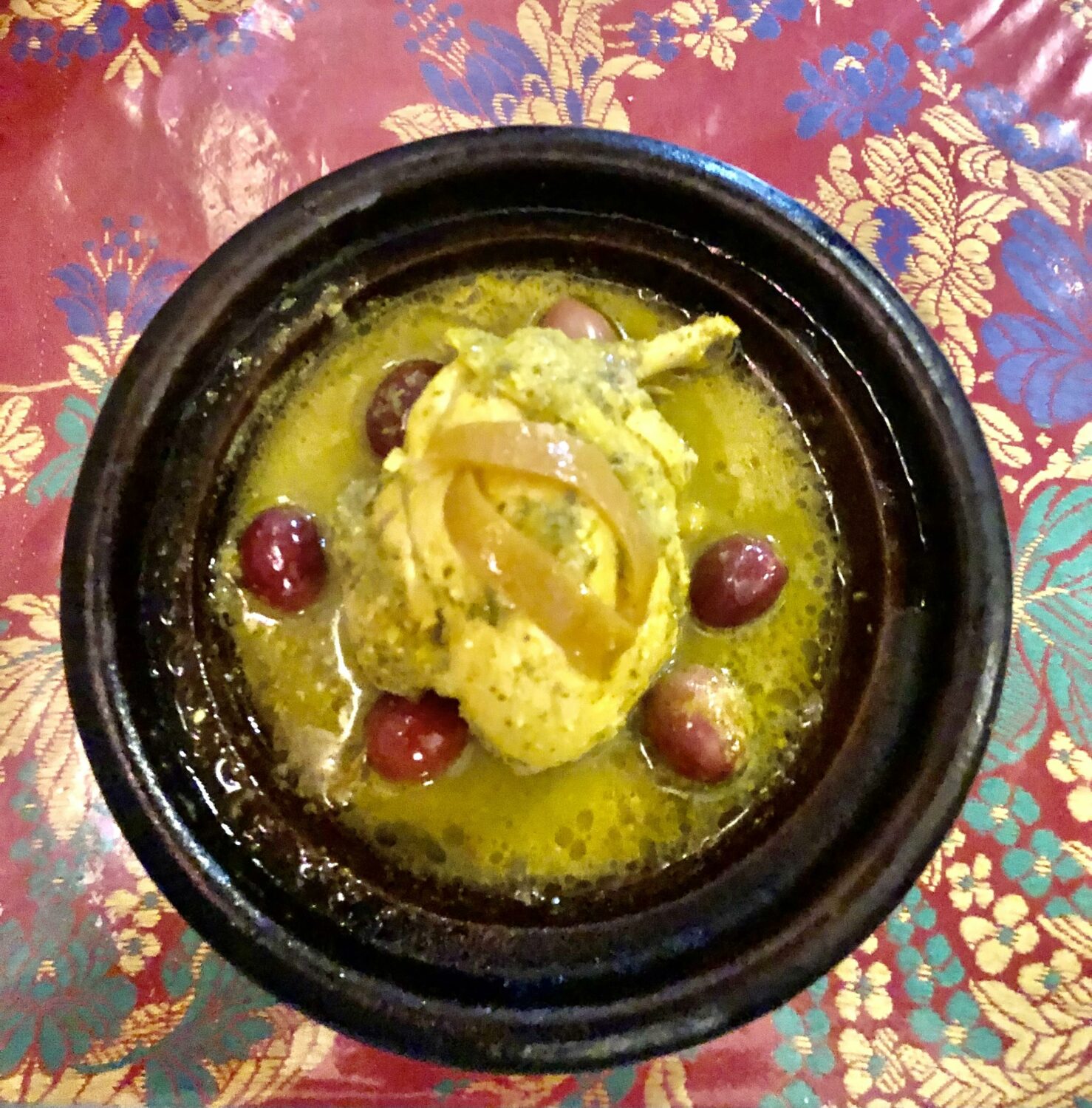
Forget the tourist noise of the central suq and instead embrace the noise of motorbikes and the market on Rue Tachenbacht. Les Arôme d’Anir (now called Tagourte, but you can still search for Les Arôme) is the place you are looking for to eat with the Moroccan residents of the northern part of the Medina. At dinner, while a Moroccan professor sitting next to me was trying to teach me the correct Arabic pronunciation to ask for mint tea, I had a truly stunning chicken tajine. Chicken breast and thigh marinated with seven spices (ras el hanout lamrouzia), cooked in the tajine for two hours to create a sauce, which is flavoured with lemon and garnished with olives. Forget the heaviness of the beef tajine: the chicken tajine is light, citrusy, balanced, and spiced just right.
15 Rue Tachenbacht, Marrakech 40000, Morocco
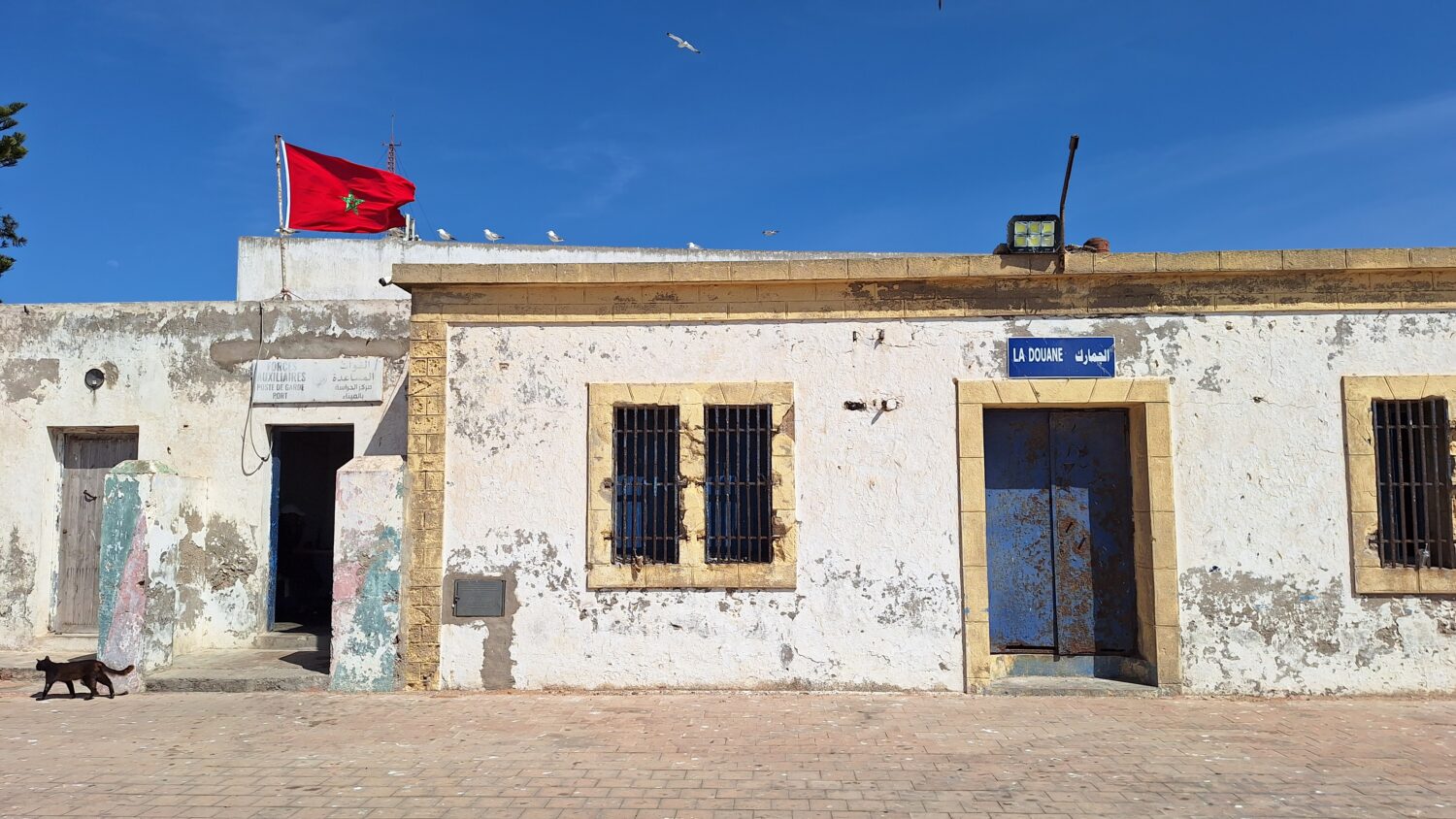
DAR DASHA –Tajine de poisson
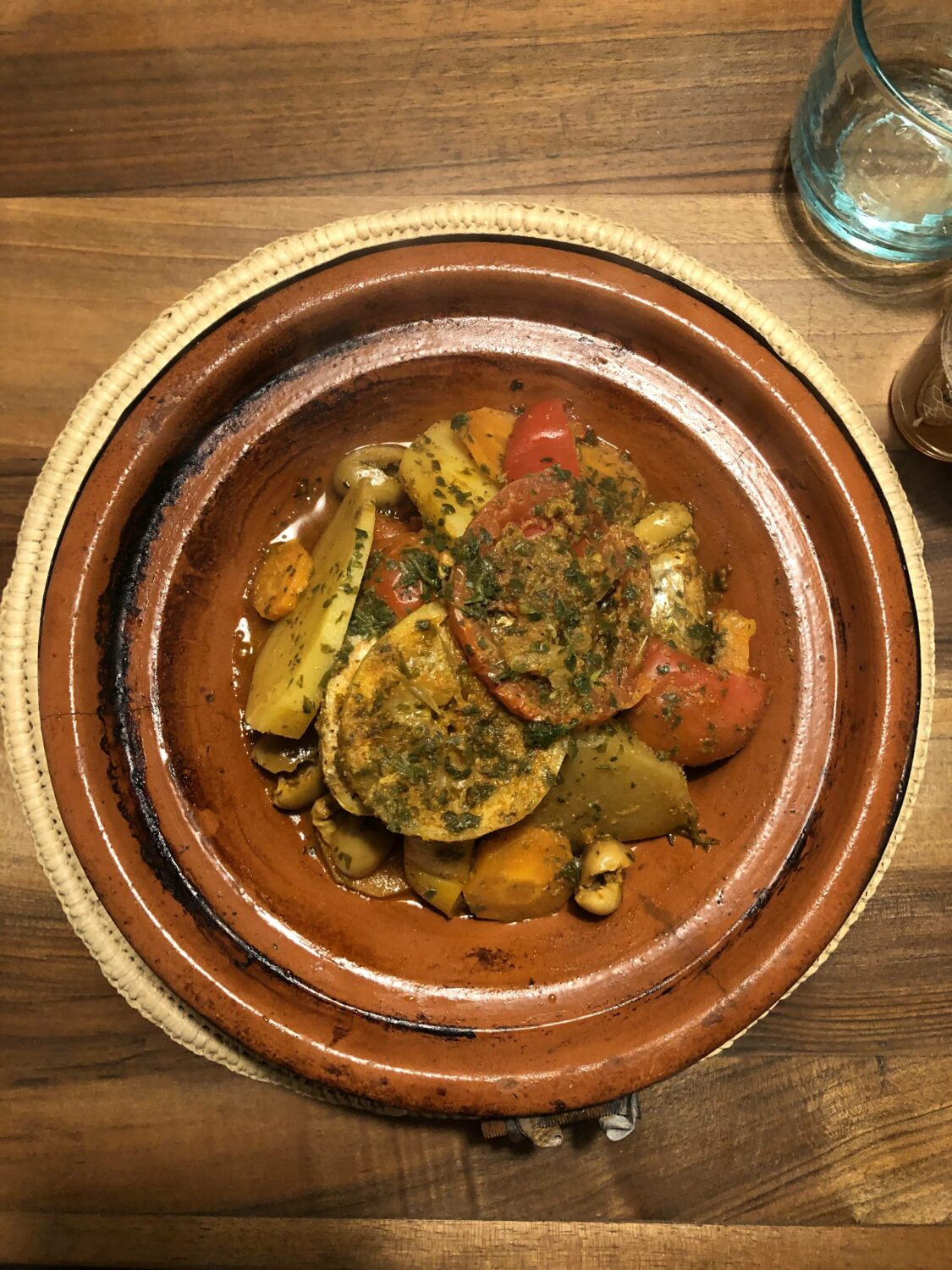
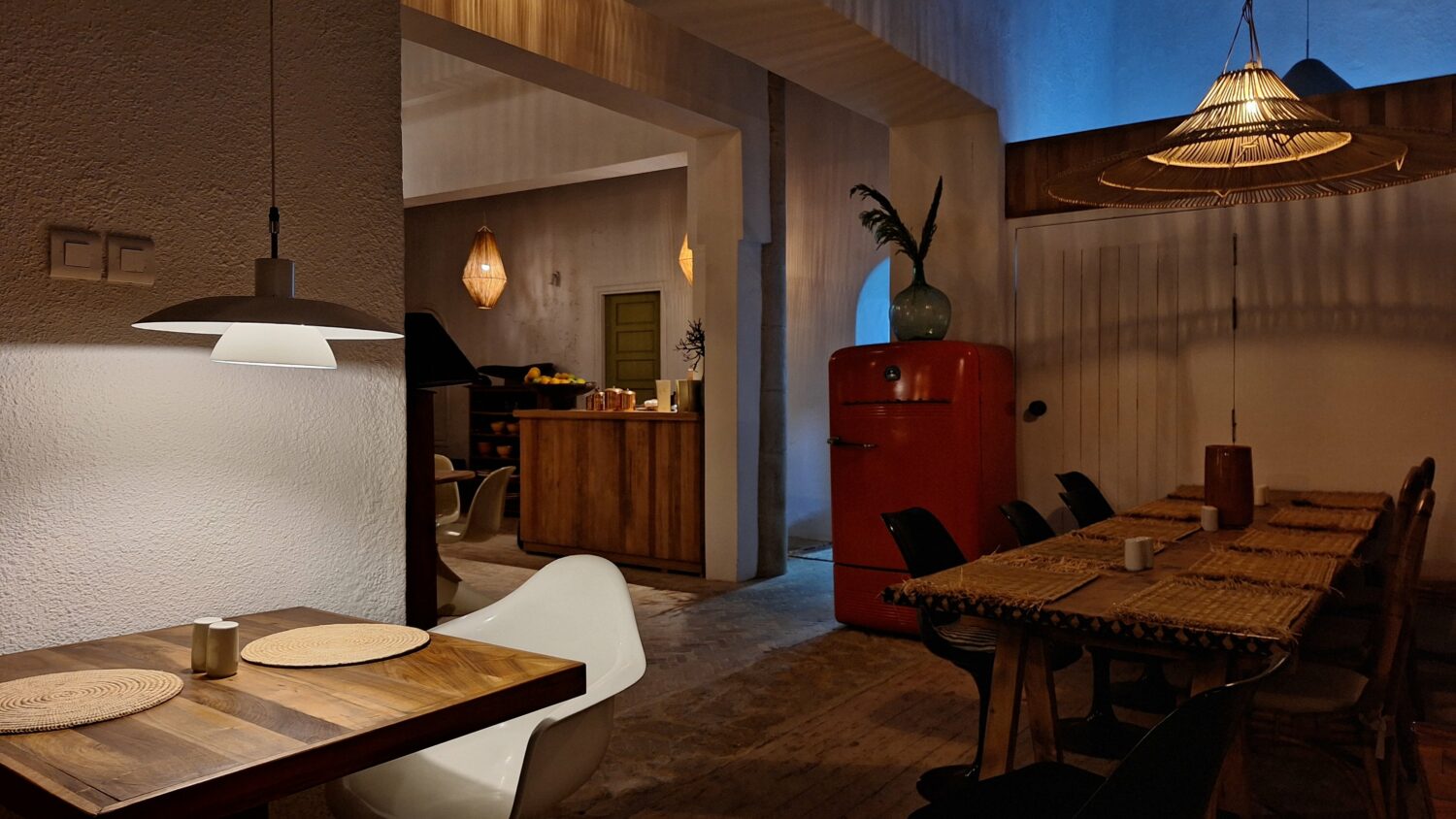
There is no other place in Morocco to eat a tajine dial lhout (literally ‘fish tajine’) than Essaouira, and there is no other place in Essaouira to eat it than Dar Dasha. The small port town, whose medina is a UNESCO World Heritage Site, has always been a favourite Moroccan hideaway for surfers, musicians and hipsters in search of Argan Valley handicrafts and fresh fish that arrives daily from the Atlantic. Dar Dasha is housed in a 1765 kasbah building in the old Jewish quarter; the family-run business is the result of a vision owner Khalid had just a year ago when, as an antique dealer, he decided to renovate his old warehouse into a restaurant with a mix of Scandinavian and Moroccan interiors. But the menu remains faithful to the Moroccan tradition of the coast. The fish tagine is enchanting: that day he had cod served with potatoes, carrots, olives, tomato and lemon. The freshness of the fish cuts through the mixture of aromatic herbs and spices (in this case an all-star cast of fennel, rosemary, nutmeg, basil, sweet chilli, thyme, bay and cardamom) that makes the sauce magical.
17 bis Rue Ibn Rochd, Essaouira 44000, Morocco
Café Restaurant Amira – Grilled octopus
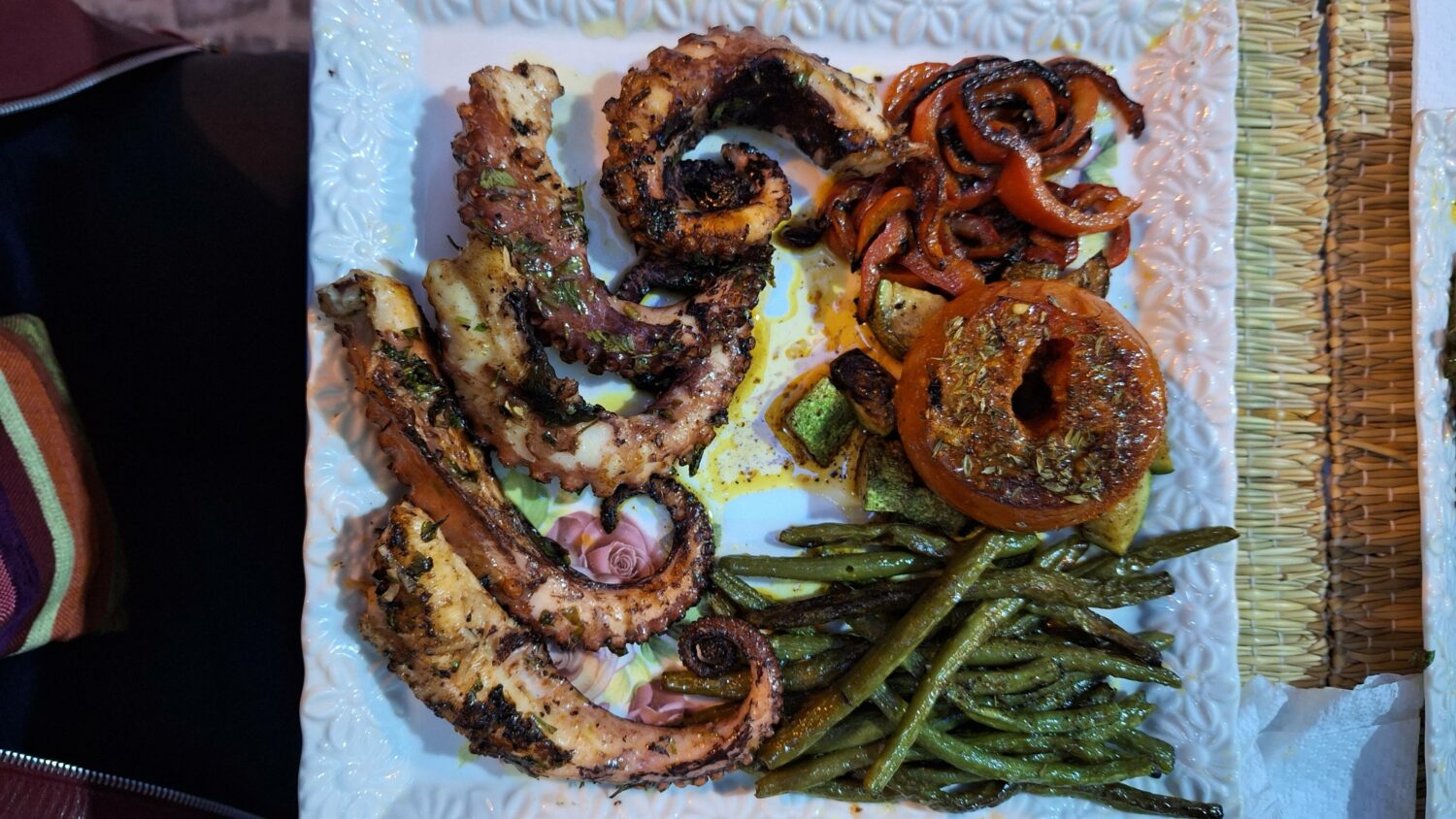
If you are staying for more than one night in Essaouira, take the trouble to make a reservation at café restaurant Amira. (Go in person because Mohamed does not take bookings on the phone and you’ll run the risk of not getting a spot.) Located in a narrow alley in the centre, Mohamed cooks octopus caught in the morning at the harbour for booked customers only. There is no menu, no appetisers nor desserts; instead you sit down, and the exceptionally tender, grilled octopus arrives, cooked with spices chosen by Mohamed (a secret mixture), accompanied by courgettes, green beans, peppers and a tomato, also all grilled.
Rue Mehdi Ibn Toumert, Essaouira 44000, Morocco
Tanjia at Chez Lamine Hadj Mustapha
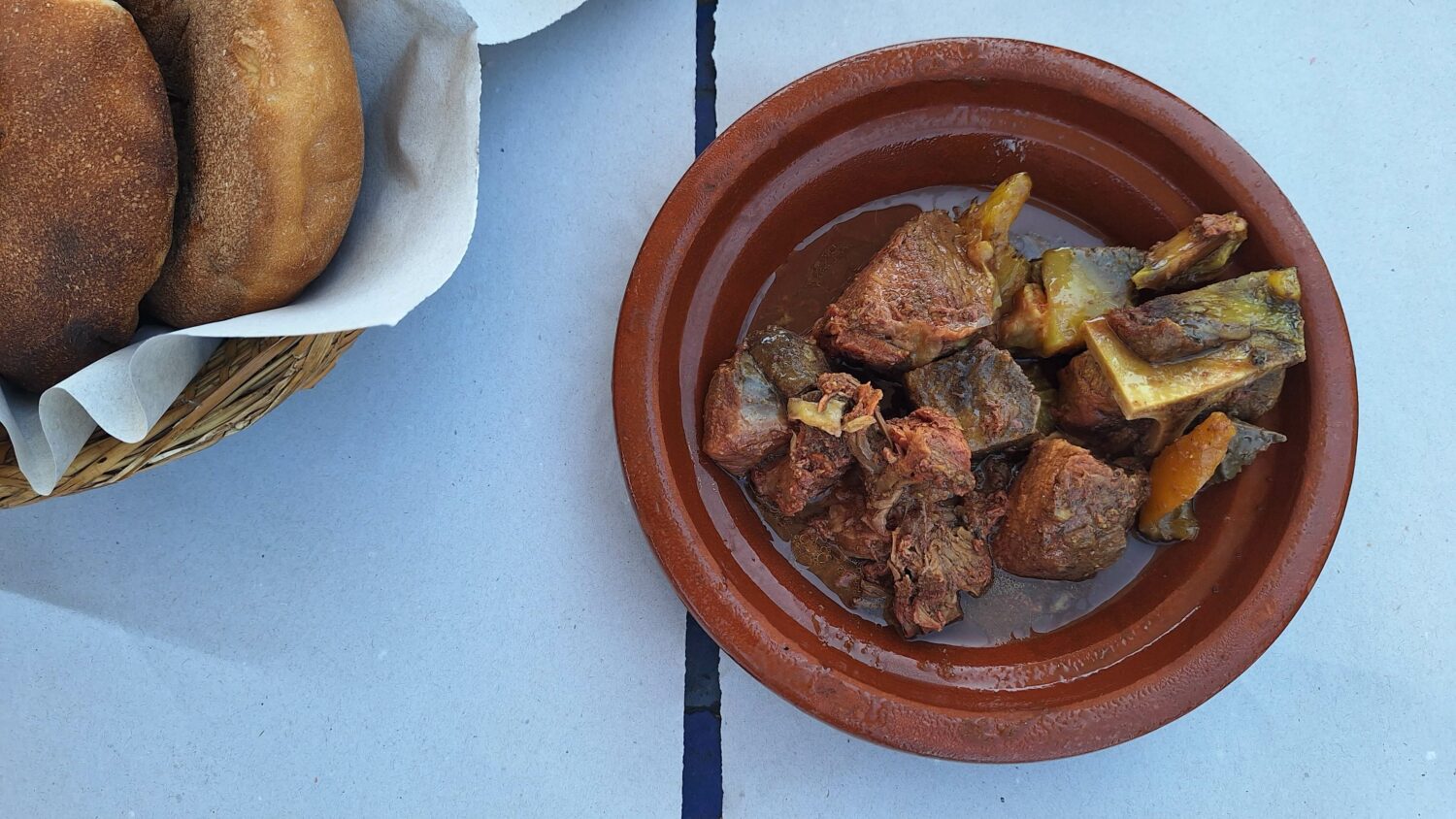
Back in Marrakech, you will notice many earthenware amphorae hanging from hooks outside butchers shops. Like the Moroccan tagine, the tanjia is a metonymy denoting content and container and is exclusive to the Marrakech area. Tanjia is cooked over a slow fire of burning ash, resulting in extremely tender meat. The ultimate tanjia is found at Chez Lamine Hadj Mustapha, in Derb Semmarine alley, a few metres from Jamaa el Fna. Lamb, mutton, and beef are served on the plate straight from the still-smoking, ash-stained amphora. The meat here is cooked with saffron, cumin, lemons, garlic and sweet additions such as honey and dried fruit. The result is a rich stew best accompanied with a refreshing Moroccan salad of tomatoes, onions, and coriander.
Derb Semmarine, Marrakech 40000, Morocco
Tanjia by you
This is the hipster – and culinary obsessive – thing to do. In Marrakech, you can cook a tanjia yourself in a communal oven. (All thanks to Nadja, again.) Go to the butcher, ask to rent a tanjia and let him fill it with the meat you want. But you’ll first need to make sure to get the right spice mix at the market and the butcher will then prepare and season everything.
Afterwards, ask for directions to the nearest communal furnace, likely a surreal place comprising dust, heat and smoke. Give your tanjia to the fernatchi (the oven supervisor) who will place it in the ashes and surround it with burning coals for the necessary hours of cooking. Once cooked, you can eat it outside in the courtyard of the kiln – make sure to have some bread and a paper plate with you.
Lorenzo Villa is a writer and editor based in Milan. He writes about lifestyle for Harper’s Bazaar Italia and collaborates with the literary magazine Galápagos. All photos by Lorenzo Villa, including the header, taken outside Chez Lamine Hadj Mustapha in Marrakech.